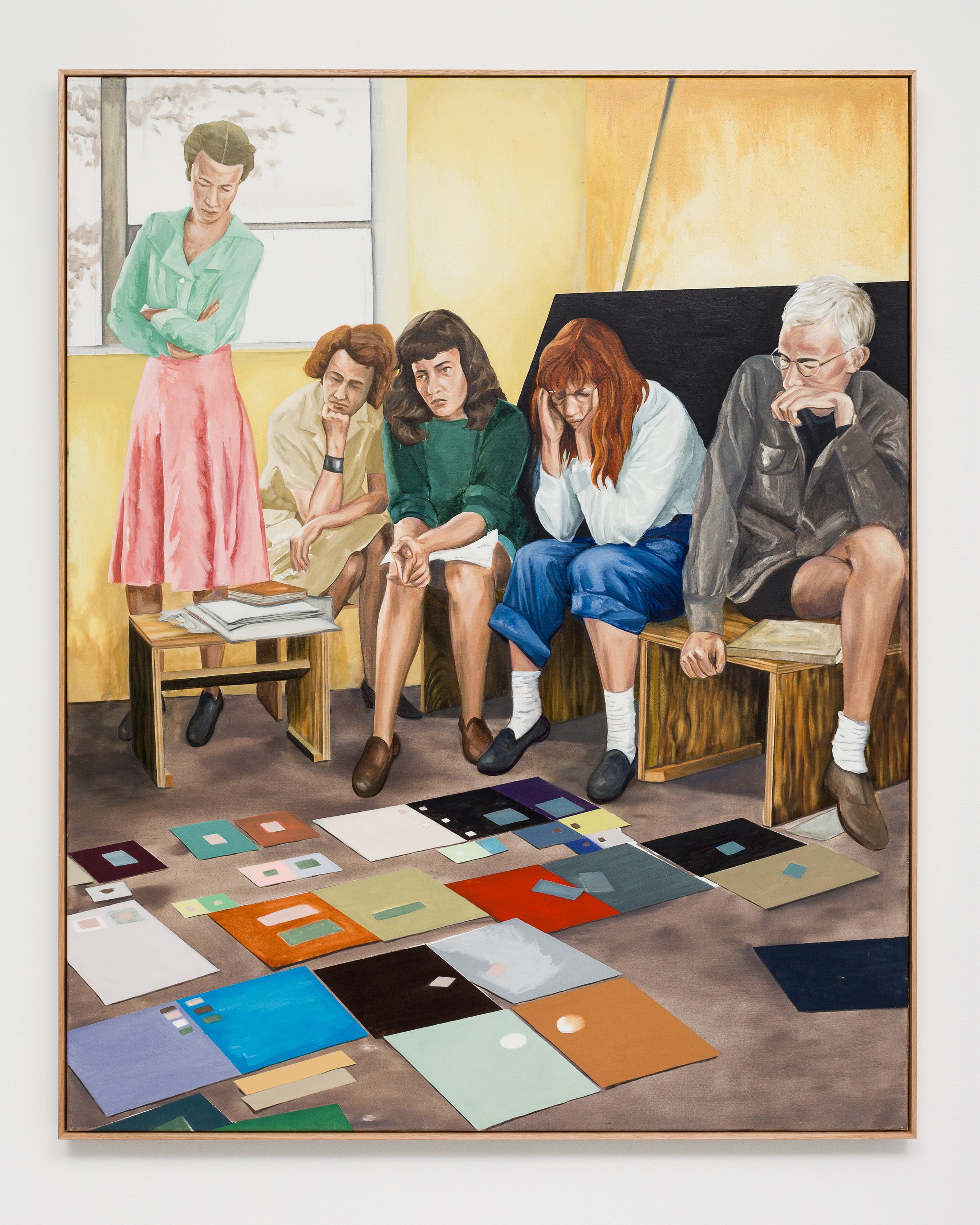The National 2019: New Australian Art, Museum of Contemporary Art, Australia
curated by Anna Davis and Clothilde Bullen
The National 2019 is a celebration of contemporary Australian art. The second of three biennial survey exhibitions, it showcases work being made across the country by artists of different generations and cultural backgrounds. Through ambitious new and commissioned projects, the 70 artists featured across three venues respond to the times in which they live, presenting observations that are provocative, political and poetic. The National is a partnership between the Art Gallery of New South Wales (AGNSW), Carriageworks and the Museum of Contemporary Art Australia (MCA). This year, it has been curated by Isobel Parker Philip (AGNSW), Daniel Mudie Cunningham (Carriageworks), and Clothilde Bullen (MCA) and Anna Davis (MCA). Working in close dialogue, they have developed three distinct presentations of new Australian art that together highlight many of the ideas and concerns motivating artists in Australia today.
As neoliberalism exposes its barren heart, we need all the more to seek out what is generative and expansive, to embrace ideas and practices that elicit joy, pleasures and connectedness. Not too long ago, in the backwaters of North Carolina, nestled in the Appalachian Mountains, an experiment took place that set out to reinvent how we might live, teach and create. At Black Mountain College (1933–56) imagination was seen as fundamental to all learning, and artistic making was ‘a model of integrating vision, materials, structure and imagery’. 1 With minimal financial resources, the college thrived instead on human capital, ‘paying for freedom with voluntary poverty’. It affirmed the ability to adapt, adjust, make something out of nothing, and fostered radical democracy through ‘permissive openness’ and an ethos of self-initiated, broad-ranging inquiry. Emphasising learning by doing, the college harnessed the pedagogical power of play and collaboration, integrating cultivation of the land and creativity, placing relationships at the centre of knowledge generation.
Here is where artist–educator–mother Kylie Banyard finds inspiration, as she herself attempts to dream up new ways of living in a deeply damaged world. Banyard’s is a critical engagement with this social and artistic history: she is well aware of the perils of romanticising a complex phenomenon and in particular driven to correct the official record, which severely underplayed the role of women in Black Mountain and relied instead on the male proper names to signal the college’s significance. Yet the artist is also loath to cede her utopian impulses, for they are a rich source of imaginings, generating the energy to fight another day. In making Modes of Associated Living (2019), Banyard begins with archival research, collecting photos that capture the multiple facets of this alternative community in glorious black and white, with mid-century modernist panache: female artists and students in action, on the land or in the studio, at creative leisure or in animated conversation. Banyard then cross-fertilises this collection to construct fictional scenarios, at times inserting her own images, messing with the archive’s historical specificity and documentary register.
Finally, she transforms these collages into paintings, scaling them up with relish and lavishing them with colour, the process itself a playful and affirming activity that channels the ethos of Black Mountain; longtime teacher Anni Albers once described her practice there as an ‘enjoyment of colours, form, surface contrasts and harmonies: a tactile sensuousness’. 2 Albers predominantly worked in textiles, a medium that hovers between functionality and formalism, which in later years would become associated with feminist attempts to confound the hierarchy between institutionally sanctioned art and domestic craft. By foregrounding female creativity and mixing her painting practice with appliqué and found fabric, Banyard’s project mobilises these discourses, reminding us of their enduring relevance. Banyard’s work is part tribute to the trailblazing women of Black Mountain, part proposition for a values revolution. It repurposes Black Mountain’s progressive vision of art-driven sustainable living for contemporary times, and it does so by repurposing painting away from its self-reflexive discourse and towards imaging joyful alternatives to being in the world.
Jacqueline Millner, 2019

Modes of Associated Living, install view, for The National 2019: New Australian Art, Museum of Contemporary Art, Australia

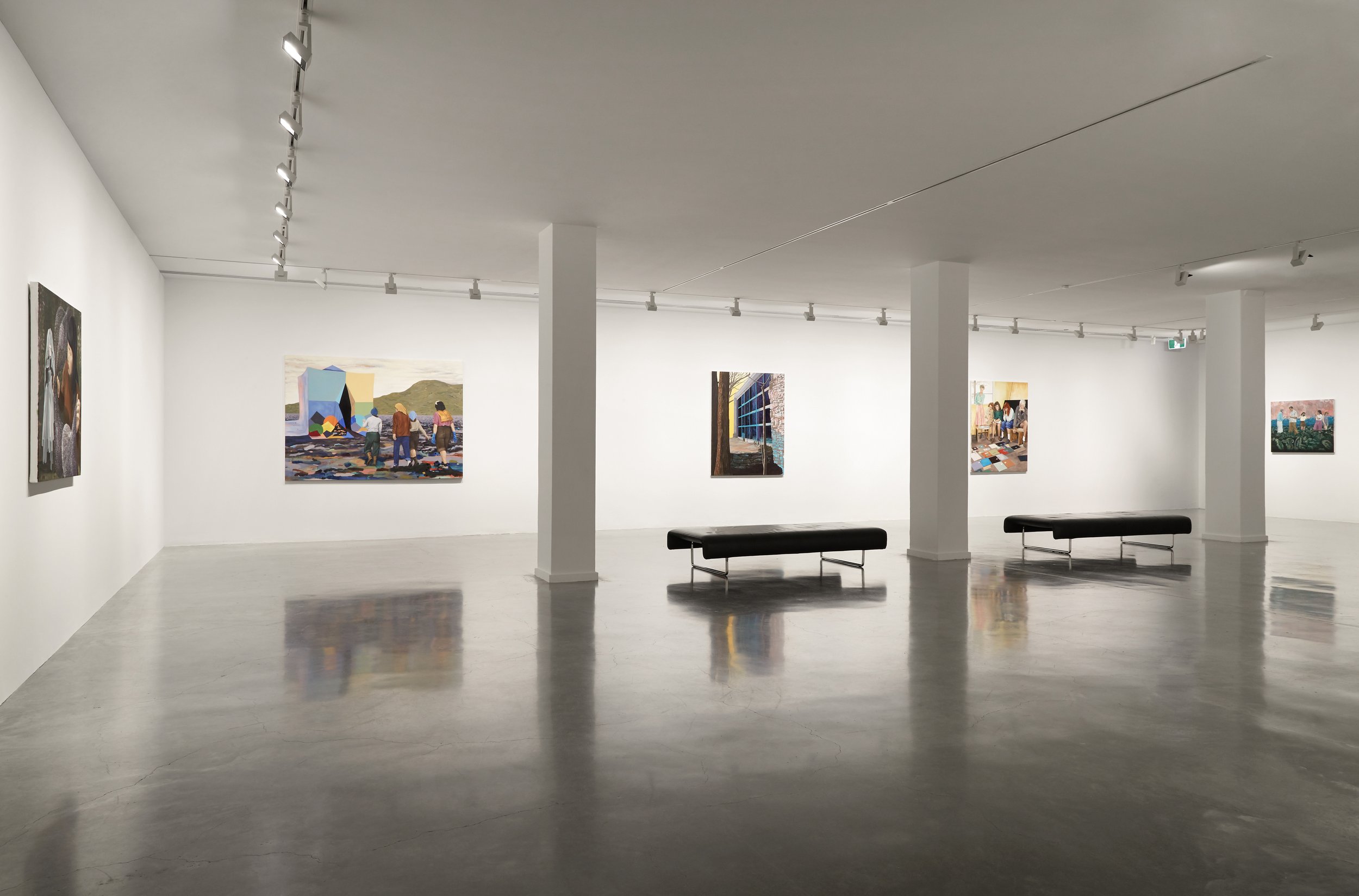

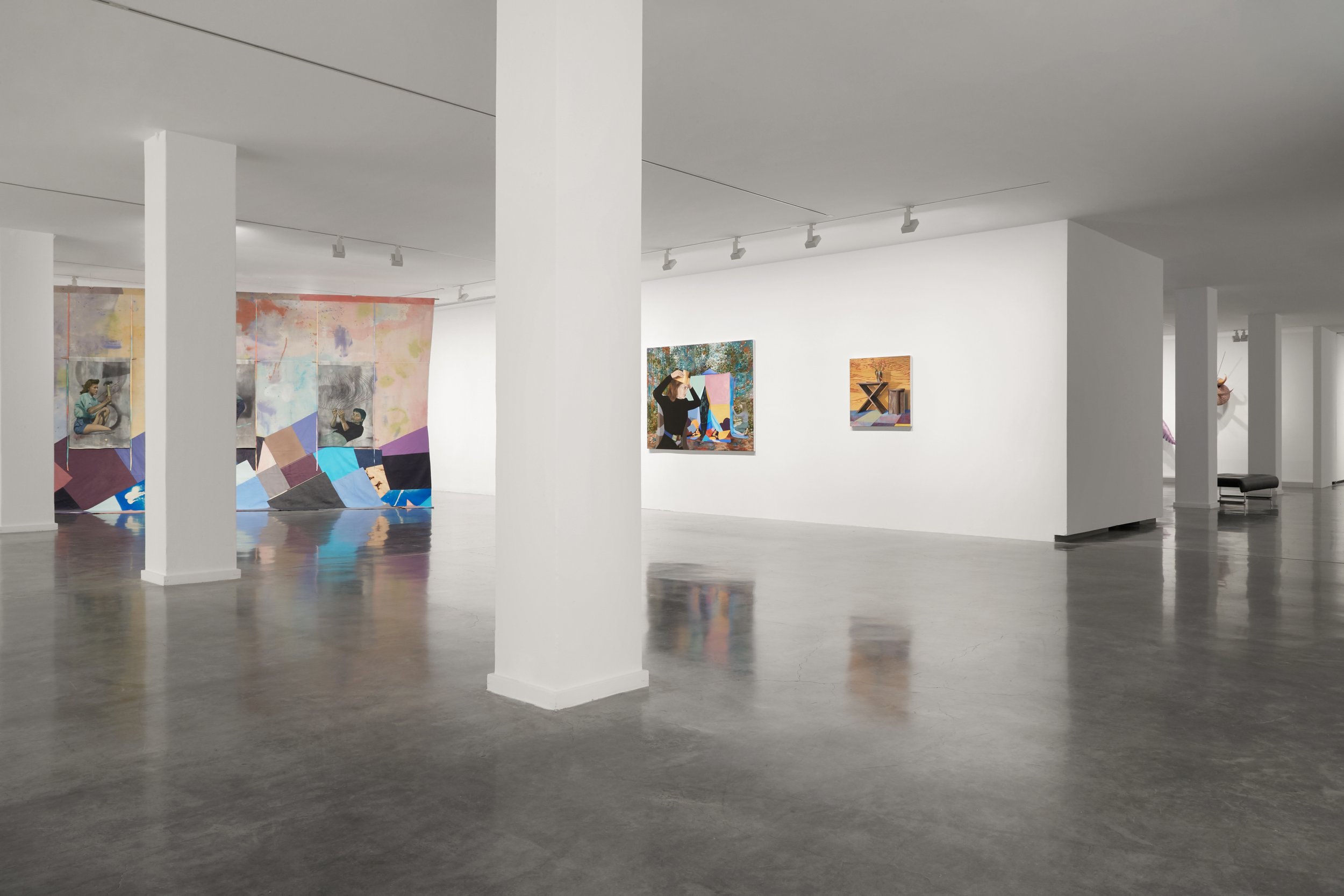
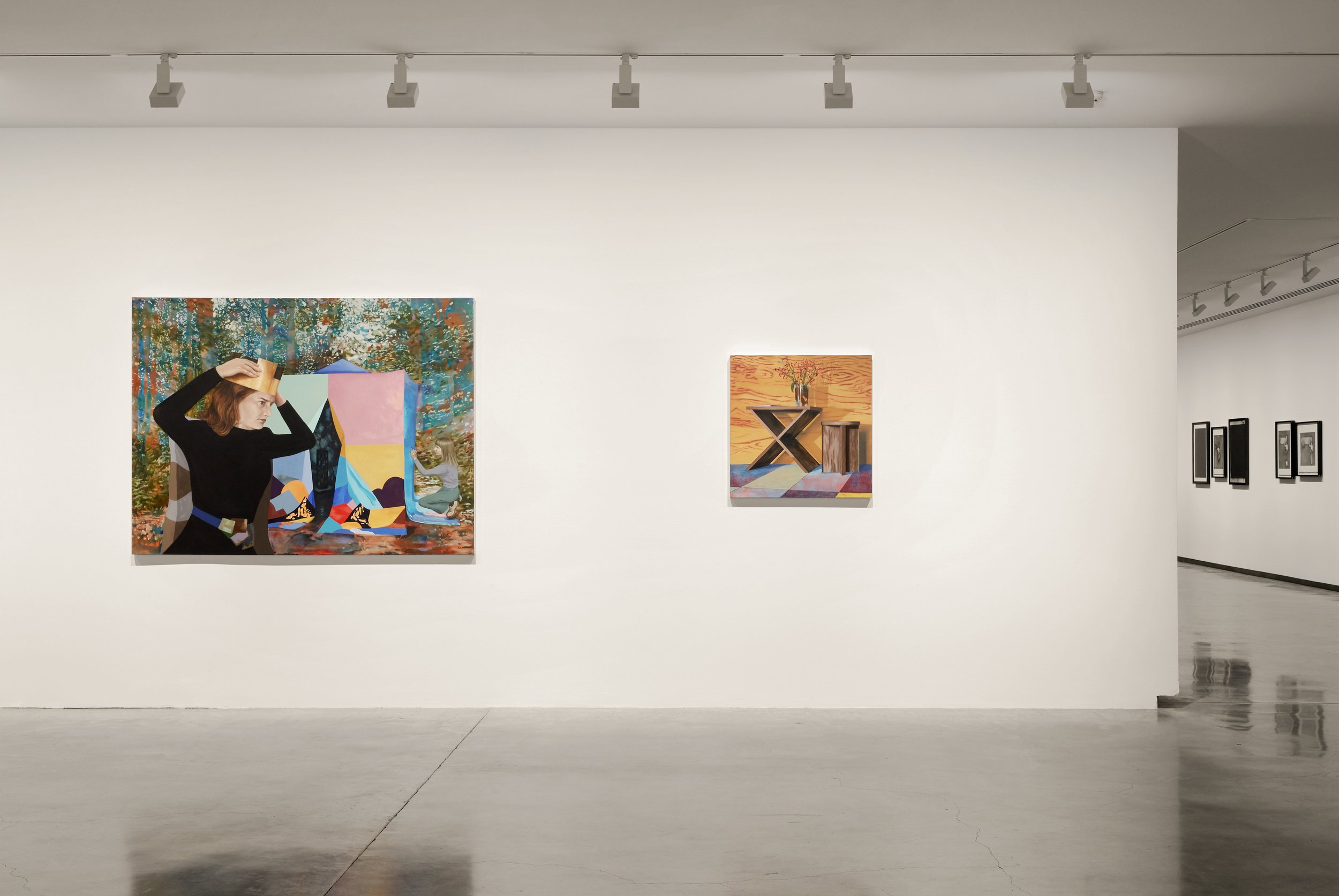
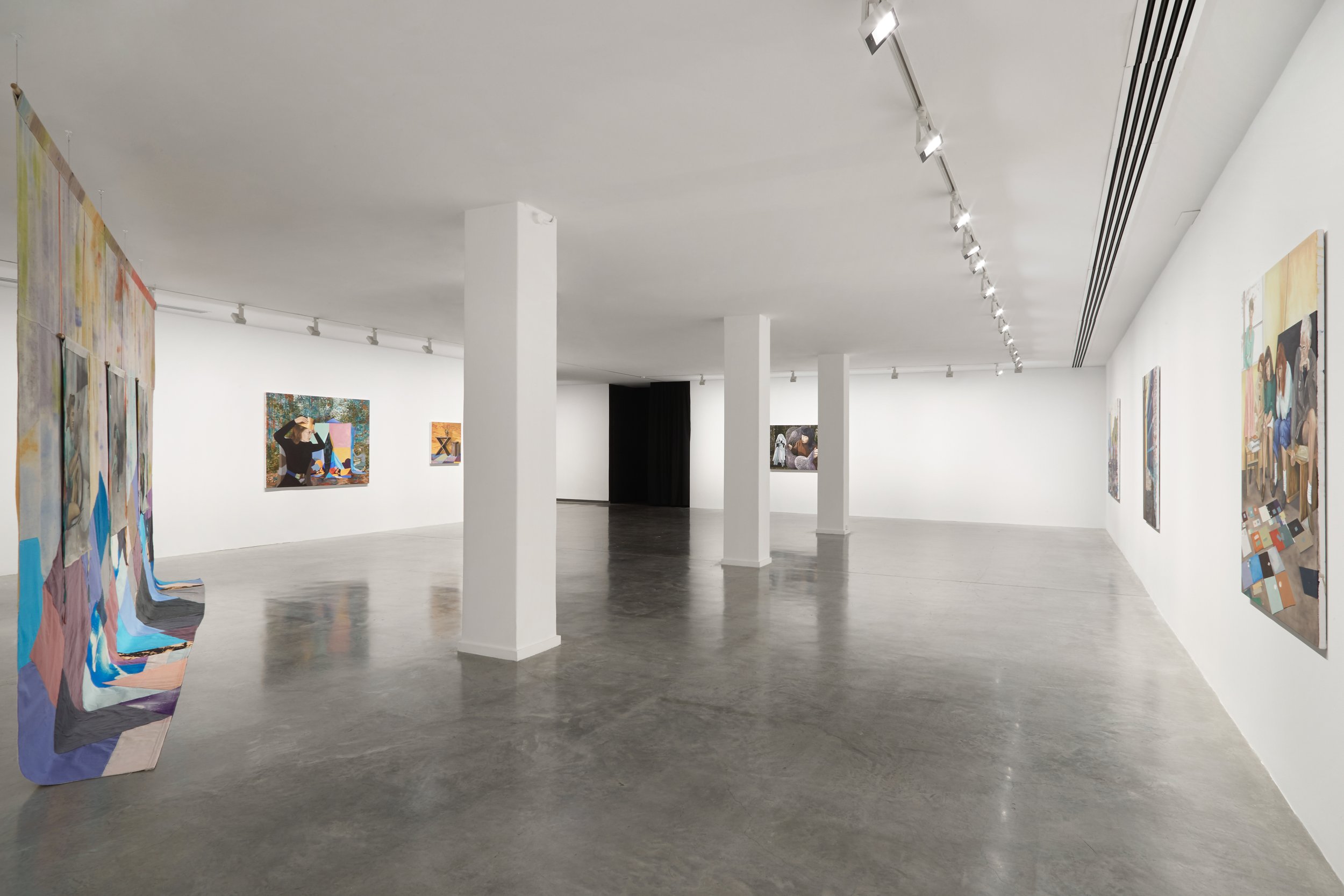

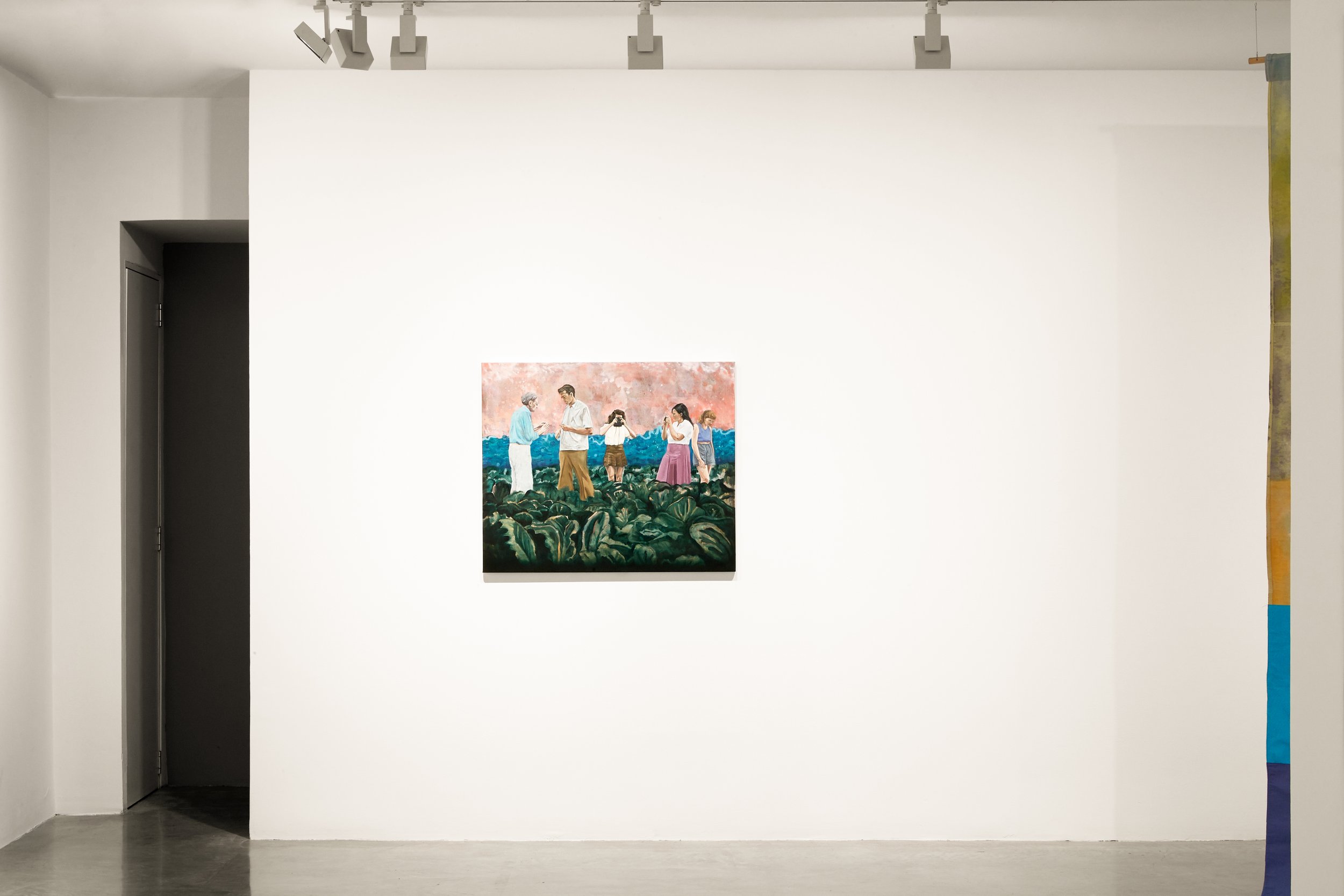
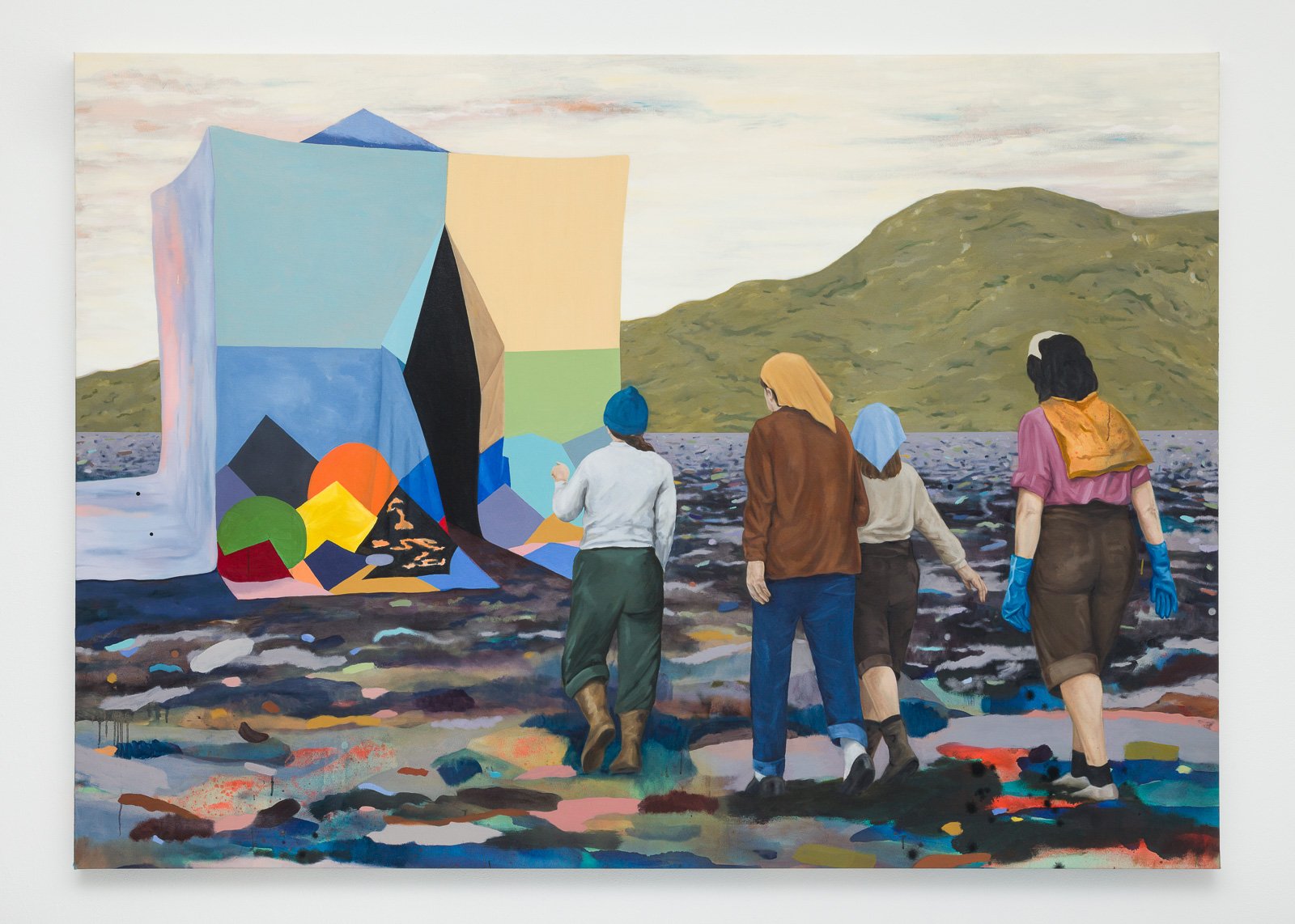
The Pilgrimage 2018, oil and acrylic on canvas, 183 x 213 cm

Lady Macbeth in Boone, 2018, oil and acrylic on canvas, 127 x 183 cm

The Quiet House, 2018, oil and acrylic on canvas, 152.5 x 122 cm

Ruth in Boone, 2018, oil and acrylic on canvas, 112 x 122 cm

Minimum House, 2018, oil and acrylic on canvas, 76 x 76 cm
